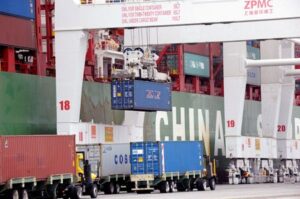By Jamie McGeever
(Reuters) – A look at the day ahead in Asian markets.
Asian markets are rising on the back of a subdued dollar, lower U.S. bond yields and looser financial conditions that the more benign outlook for U.S. interest rates lately has delivered, and Tuesday looks like being another positive day for risk assets.
Buying momentum should be strong after another day of solid gains on Wall Street, and the bullishness across local markets is palpable – China opened strongly after last week’s holiday, volatility in Japan’s currency markets has subsided, and Hong Kong stocks are on their best run in six years.
The Hang Seng has now been up 10 days on the trot, gaining a remarkable 15% in the process. It is probably due for a down day but who knows – maybe it has enough juice to test the record 14 consecutive days in the green from January 2018.
Inflation data from the Philippines and Taiwan, Japanese service sector PMI, and the latest international foreign exchange reserve holdings from several countries, including China, are all highlights on Tuesday’s calendar.
The main event, though, is the Reserve Bank of Australia’s policy decision. Or, more accurately, the guidance offered by Governor Michele Bullock in her press conference after the bank keeps its cash rate on hold again at 4.35%.
That’s the expectation of all but one of the 37 economists surveyed in a Reuters poll – the other predicted a quarter point rate cut hopes gradually fade.
At the RBA’s last meeting in mid-March, policymakers watered down their tightening bias, although Bullock declined to say whether policy has shifted to neutral, saying risks were “finely balanced”, and pushed back immediate rate cuts.
Since then, U.S. rate cut expectations have receded further, the Australian dollar has recovered some ground, and domestic inflation has not cooled as much as analysts or policymakers had hoped.
The consensus view from economists is still for the cash rate to be cut by a quarter point in September, but money markets are leaning the other way and are currently attaching a 50-50 chance of a quarter point hike in September.
Elsewhere, official figures are expected to show a pick up in consumer price inflation in the Philippines with the annual rate rising to 4.1% in April from 3.7% in March – not the direction of travel the central bank wants to see.
Price pressures in Taiwan, however, are more closely influenced by dynamics in China, where deflation has been more of a threat to the economy recently than hot inflation.
China releases its latest official FX reserves figures, which will be closely watched for signs Beijing may be offloading some of its U.S. Treasuries to support the yuan. Total reserves are seen dipping to $3.225 trillion in April from $3.246 trillion in March.
Here are key developments that could provide more direction to markets on Tuesday:
– Australia central bank policy decision
– Japan services PMI (April)
– Philippines inflation (April)
(Reporting and Writing by Jamie McGeever; Editing by Josie Kao)





